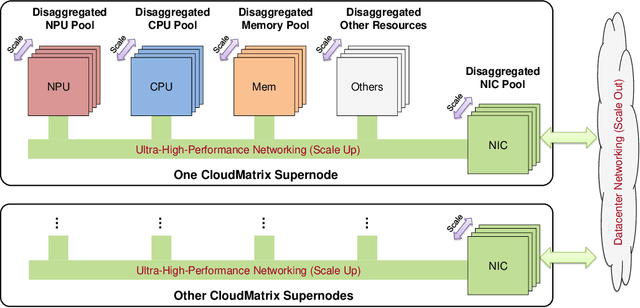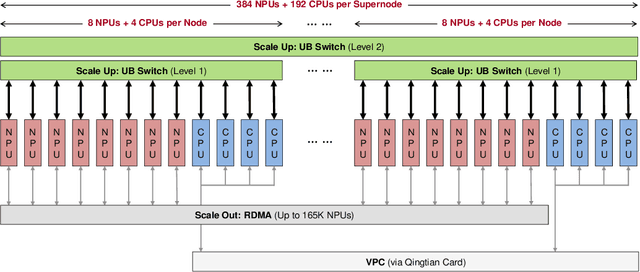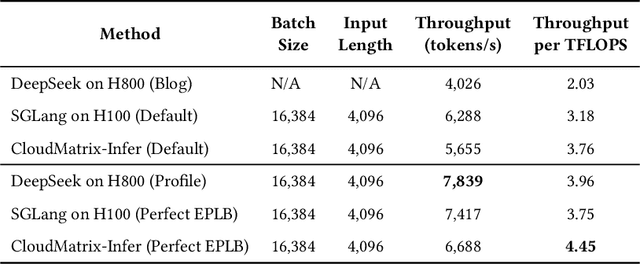Ying Li
School of Software & Microelectronics, Peking University, Beijing, China
An Automatic Detection Method for Hematoma Features in Placental Abruption Ultrasound Images Based on Few-Shot Learning
Oct 24, 2025Abstract:Placental abruption is a severe complication during pregnancy, and its early accurate diagnosis is crucial for ensuring maternal and fetal safety. Traditional ultrasound diagnostic methods heavily rely on physician experience, leading to issues such as subjective bias and diagnostic inconsistencies. This paper proposes an improved model, EH-YOLOv11n (Enhanced Hemorrhage-YOLOv11n), based on small-sample learning, aiming to achieve automatic detection of hematoma features in placental ultrasound images. The model enhances performance through multidimensional optimization: it integrates wavelet convolution and coordinate convolution to strengthen frequency and spatial feature extraction; incorporates a cascaded group attention mechanism to suppress ultrasound artifacts and occlusion interference, thereby improving bounding box localization accuracy. Experimental results demonstrate a detection accuracy of 78%, representing a 2.5% improvement over YOLOv11n and a 13.7% increase over YOLOv8. The model exhibits significant superiority in precision-recall curves, confidence scores, and occlusion scenarios. Combining high accuracy with real-time processing, this model provides a reliable solution for computer-aided diagnosis of placental abruption, holding significant clinical application value.
WoW: Towards a World omniscient World model Through Embodied Interaction
Sep 26, 2025Abstract:Humans develop an understanding of intuitive physics through active interaction with the world. This approach is in stark contrast to current video models, such as Sora, which rely on passive observation and therefore struggle with grasping physical causality. This observation leads to our central hypothesis: authentic physical intuition of the world model must be grounded in extensive, causally rich interactions with the real world. To test this hypothesis, we present WoW, a 14-billion-parameter generative world model trained on 2 million robot interaction trajectories. Our findings reveal that the model's understanding of physics is a probabilistic distribution of plausible outcomes, leading to stochastic instabilities and physical hallucinations. Furthermore, we demonstrate that this emergent capability can be actively constrained toward physical realism by SOPHIA, where vision-language model agents evaluate the DiT-generated output and guide its refinement by iteratively evolving the language instructions. In addition, a co-trained Inverse Dynamics Model translates these refined plans into executable robotic actions, thus closing the imagination-to-action loop. We establish WoWBench, a new benchmark focused on physical consistency and causal reasoning in video, where WoW achieves state-of-the-art performance in both human and autonomous evaluation, demonstrating strong ability in physical causality, collision dynamics, and object permanence. Our work provides systematic evidence that large-scale, real-world interaction is a cornerstone for developing physical intuition in AI. Models, data, and benchmarks will be open-sourced.
Advancements in Chinese font generation since deep learning era: A survey
Aug 09, 2025



Abstract:Chinese font generation aims to create a new Chinese font library based on some reference samples. It is a topic of great concern to many font designers and typographers. Over the past years, with the rapid development of deep learning algorithms, various new techniques have achieved flourishing and thriving progress. Nevertheless, how to improve the overall quality of generated Chinese character images remains a tough issue. In this paper, we conduct a holistic survey of the recent Chinese font generation approaches based on deep learning. To be specific, we first illustrate the research background of the task. Then, we outline our literature selection and analysis methodology, and review a series of related fundamentals, including classical deep learning architectures, font representation formats, public datasets, and frequently-used evaluation metrics. After that, relying on the number of reference samples required to generate a new font, we categorize the existing methods into two major groups: many-shot font generation and few-shot font generation methods. Within each category, representative approaches are summarized, and their strengths and limitations are also discussed in detail. Finally, we conclude our paper with the challenges and future directions, with the expectation to provide some valuable illuminations for the researchers in this field.
HarmonPaint: Harmonized Training-Free Diffusion Inpainting
Jul 22, 2025Abstract:Existing inpainting methods often require extensive retraining or fine-tuning to integrate new content seamlessly, yet they struggle to maintain coherence in both structure and style between inpainted regions and the surrounding background. Motivated by these limitations, we introduce HarmonPaint, a training-free inpainting framework that seamlessly integrates with the attention mechanisms of diffusion models to achieve high-quality, harmonized image inpainting without any form of training. By leveraging masking strategies within self-attention, HarmonPaint ensures structural fidelity without model retraining or fine-tuning. Additionally, we exploit intrinsic diffusion model properties to transfer style information from unmasked to masked regions, achieving a harmonious integration of styles. Extensive experiments demonstrate the effectiveness of HarmonPaint across diverse scenes and styles, validating its versatility and performance.
UVLM: Benchmarking Video Language Model for Underwater World Understanding
Jul 03, 2025Abstract:Recently, the remarkable success of large language models (LLMs) has achieved a profound impact on the field of artificial intelligence. Numerous advanced works based on LLMs have been proposed and applied in various scenarios. Among them, video language models (VidLMs) are particularly widely used. However, existing works primarily focus on terrestrial scenarios, overlooking the highly demanding application needs of underwater observation. To overcome this gap, we introduce UVLM, an under water observation benchmark which is build through a collaborative approach combining human expertise and AI models. To ensure data quality, we have conducted in-depth considerations from multiple perspectives. First, to address the unique challenges of underwater environments, we selected videos that represent typical underwater challenges including light variations, water turbidity, and diverse viewing angles to construct the dataset. Second, to ensure data diversity, the dataset covers a wide range of frame rates, resolutions, 419 classes of marine animals, and various static plants and terrains. Next, for task diversity, we adopted a structured design where observation targets are categorized into two major classes: biological and environmental. Each category includes content observation and change/action observation, totaling 20 distinct task types. Finally, we designed several challenging evaluation metrics to enable quantitative comparison and analysis of different methods. Experiments on two representative VidLMs demonstrate that fine-tuning VidLMs on UVLM significantly improves underwater world understanding while also showing potential for slight improvements on existing in-air VidLM benchmarks, such as VideoMME and Perception text. The dataset and prompt engineering will be released publicly.
Serving Large Language Models on Huawei CloudMatrix384
Jun 15, 2025



Abstract:The rapid evolution of large language models (LLMs), driven by growing parameter scales, adoption of mixture-of-experts (MoE) architectures, and expanding context lengths, imposes unprecedented demands on AI infrastructure. Traditional AI clusters face limitations in compute intensity, memory bandwidth, inter-chip communication, and latency, compounded by variable workloads and strict service-level objectives. Addressing these issues requires fundamentally redesigned hardware-software integration. This paper introduces Huawei CloudMatrix, a next-generation AI datacenter architecture, realized in the production-grade CloudMatrix384 supernode. It integrates 384 Ascend 910C NPUs and 192 Kunpeng CPUs interconnected via an ultra-high-bandwidth Unified Bus (UB) network, enabling direct all-to-all communication and dynamic pooling of resources. These features optimize performance for communication-intensive operations, such as large-scale MoE expert parallelism and distributed key-value cache access. To fully leverage CloudMatrix384, we propose CloudMatrix-Infer, an advanced LLM serving solution incorporating three core innovations: a peer-to-peer serving architecture that independently scales prefill, decode, and caching; a large-scale expert parallelism strategy supporting EP320 via efficient UB-based token dispatch; and hardware-aware optimizations including specialized operators, microbatch-based pipelining, and INT8 quantization. Evaluation with the DeepSeek-R1 model shows CloudMatrix-Infer achieves state-of-the-art efficiency: prefill throughput of 6,688 tokens/s per NPU and decode throughput of 1,943 tokens/s per NPU (<50 ms TPOT). It effectively balances throughput and latency, sustaining 538 tokens/s even under stringent 15 ms latency constraints, while INT8 quantization maintains model accuracy across benchmarks.
RAIDEN-R1: Improving Role-awareness of LLMs via GRPO with Verifiable Reward
May 15, 2025Abstract:Role-playing conversational agents (RPCAs) face persistent challenges in maintaining role consistency. To address this, we propose RAIDEN-R1, a novel reinforcement learning framework that integrates Verifiable Role-Awareness Reward (VRAR). The method introduces both singular and multi-term mining strategies to generate quantifiable rewards by assessing role-specific keys. Additionally, we construct a high-quality, role-aware Chain-of-Thought dataset through multi-LLM collaboration, and implement experiments to enhance reasoning coherence. Experiments on the RAIDEN benchmark demonstrate RAIDEN-R1's superiority: our 14B-GRPO model achieves 88.04% and 88.65% accuracy on Script-Based Knowledge and Conversation Memory metrics, respectively, outperforming baseline models while maintaining robustness. Case analyses further reveal the model's enhanced ability to resolve conflicting contextual cues and sustain first-person narrative consistency. This work bridges the non-quantifiability gap in RPCA training and provides insights into role-aware reasoning patterns, advancing the development of RPCAs.
FreqMoE: Dynamic Frequency Enhancement for Neural PDE Solvers
May 11, 2025Abstract:Fourier Neural Operators (FNO) have emerged as promising solutions for efficiently solving partial differential equations (PDEs) by learning infinite-dimensional function mappings through frequency domain transformations. However, the sparsity of high-frequency signals limits computational efficiency for high-dimensional inputs, and fixed-pattern truncation often causes high-frequency signal loss, reducing performance in scenarios such as high-resolution inputs or long-term predictions. To address these challenges, we propose FreqMoE, an efficient and progressive training framework that exploits the dependency of high-frequency signals on low-frequency components. The model first learns low-frequency weights and then applies a sparse upward-cycling strategy to construct a mixture of experts (MoE) in the frequency domain, effectively extending the learned weights to high-frequency regions. Experiments on both regular and irregular grid PDEs demonstrate that FreqMoE achieves up to 16.6% accuracy improvement while using merely 2.1% parameters (47.32x reduction) compared to dense FNO. Furthermore, the approach demonstrates remarkable stability in long-term predictions and generalizes seamlessly to various FNO variants and grid structures, establishing a new ``Low frequency Pretraining, High frequency Fine-tuning'' paradigm for solving PDEs.
PADriver: Towards Personalized Autonomous Driving
May 08, 2025Abstract:In this paper, we propose PADriver, a novel closed-loop framework for personalized autonomous driving (PAD). Built upon Multi-modal Large Language Model (MLLM), PADriver takes streaming frames and personalized textual prompts as inputs. It autoaggressively performs scene understanding, danger level estimation and action decision. The predicted danger level reflects the risk of the potential action and provides an explicit reference for the final action, which corresponds to the preset personalized prompt. Moreover, we construct a closed-loop benchmark named PAD-Highway based on Highway-Env simulator to comprehensively evaluate the decision performance under traffic rules. The dataset contains 250 hours videos with high-quality annotation to facilitate the development of PAD behavior analysis. Experimental results on the constructed benchmark show that PADriver outperforms state-of-the-art approaches on different evaluation metrics, and enables various driving modes.
ManipDreamer: Boosting Robotic Manipulation World Model with Action Tree and Visual Guidance
Apr 23, 2025



Abstract:While recent advancements in robotic manipulation video synthesis have shown promise, significant challenges persist in ensuring effective instruction-following and achieving high visual quality. Recent methods, like RoboDreamer, utilize linguistic decomposition to divide instructions into separate lower-level primitives, conditioning the world model on these primitives to achieve compositional instruction-following. However, these separate primitives do not consider the relationships that exist between them. Furthermore, recent methods neglect valuable visual guidance, including depth and semantic guidance, both crucial for enhancing visual quality. This paper introduces ManipDreamer, an advanced world model based on the action tree and visual guidance. To better learn the relationships between instruction primitives, we represent the instruction as the action tree and assign embeddings to tree nodes, each instruction can acquire its embeddings by navigating through the action tree. The instruction embeddings can be used to guide the world model. To enhance visual quality, we combine depth and semantic guidance by introducing a visual guidance adapter compatible with the world model. This visual adapter enhances both the temporal and physical consistency of video generation. Based on the action tree and visual guidance, ManipDreamer significantly boosts the instruction-following ability and visual quality. Comprehensive evaluations on robotic manipulation benchmarks reveal that ManipDreamer achieves large improvements in video quality metrics in both seen and unseen tasks, with PSNR improved from 19.55 to 21.05, SSIM improved from 0.7474 to 0.7982 and reduced Flow Error from 3.506 to 3.201 in unseen tasks, compared to the recent RoboDreamer model. Additionally, our method increases the success rate of robotic manipulation tasks by 2.5% in 6 RLbench tasks on average.
 Add to Chrome
Add to Chrome Add to Firefox
Add to Firefox Add to Edge
Add to Edge